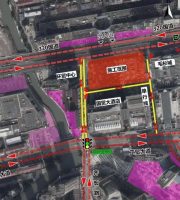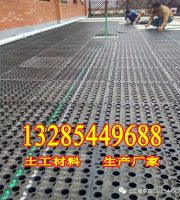35% of R28) has almost no loss of later strength after freezing.
For the critical strength, the values specified by various countries vary.
When the temperature rises, the hydration is accelerated and the strength of the solution increases rapidly; When the temperature drops to 0 ℃, part of the water in the concrete begins to freeze and gradually changes from liquid phase (water) to solid phase (ice).
Before pouring, try to heat up to melt the frozen soil.
It can be seen that in winter concrete construction, the change of water form is the key to the growth of concrete strength.
Generally, each layer shall not exceed 500mm.
(2) Before pouring, thermal insulation materials for concrete covering, such as plastic film, color strip cloth, cotton felt and grass curtain, shall be prepared, and corresponding anti freezing and thermal insulation measures shall be taken.
Concrete curing: (1) after the concrete is treated by relevant construction process, it shall be covered with plastic film and covered with straw curtain, cotton felt and other thermal insulation curing in time to ensure that the concrete will not be frozen before initial setting.
(2) During winter construction, the pump truck moistening pipe water shall not be put into the formwork; The mortar used for moistening the pipe shall not be put into the formwork, nor shall it be poured in the component structure.
The results show that the newly poured concrete has a pre curing period before freezing, which can increase its internal liquid phase, reduce solid phase and accelerate the hydration of cement.
The formwork removal time of concrete wall, column and other side formwork shall be appropriately extended to avoid peeling on the surface and affecting the appearance quality.
After pouring, thermal insulation must be strengthened for the frost prone parts of concrete structure to prevent freezing damage.
early freezing damage) and reduce the strength.
Necessary wind proof and sealing measures shall be taken to improve the thermal insulation effect.
Rust of reinforcement in concrete 4.
(2) At the initial stage of curing, special personnel shall be assigned to measure the temperature and record the temperature changes throughout the curing period in detail.
When the water in the concrete completely turns into ice, that is, the complete liquid phase change into solid phase, the cement hydration basically stops, and the strength does not increase at this time.
During pouring, pay more attention to vibration in place to make the concrete fill the test mold, no significant sinking and no obvious bubble discharge.
(3) During pouring, the construction unit shall observe the uniformity and consistency change of concrete mixture at any time.
It can be seen that before the concrete is frozen, it should have a pre curing period at normal temperature to accelerate the hydration of cement and make the concrete obtain the minimum strength without freezing damage, which is generally called critical strength, so as to achieve the expected effect.
Reduce concrete durability.
When the concrete slump and requirements change at the pouring site, contact the concrete company in time for timely adjustment.
(5) When pouring thick monolithic structural concrete in layers, the concrete temperature of the poured layer shall not be lower than 2 ℃ before being covered by the previous layer of concrete.
At this time, the water involved in cement hydration is reduced.
Therefore, the plastering time shall be properly grasped, and the secondary plastering shall be carried out before the initial setting (finger marks can be left by gently pressing the surface by hand), so as to reduce the surface cracks.
After water turns into ice, the volume increases by about 9%, and an expansion stress of about 2500kg / cm2 is generated.
(3) Concrete pouring shall not be carried out on the frozen soil layer.
If the concrete is maintained after thawing (i.e.
The experimental study also shows that the longer the pre curing period before freezing, the smaller the strength loss.
When the ice melts, various voids will be formed in the concrete, which will reduce the compactness and durability of the concrete.
Harm of concrete freezing injury: 1.
The concrete and ambient temperature shall be measured at least four times every day and night, so as to take remedial measures in time in case of problems..
Finally, the second plastering with a finishing trowel shall be used to close the water collection cracks, and then the concrete surface shall be immediately covered with plastic film, Make the evaporated free water in the concrete accumulate on the concrete surface for thermal insulation and curing, and then cover the grass curtain on the film.
Cause concrete cracks 3.
It is strictly prohibited to adjust the slump of concrete by adding water.
The temperature continues to drop.
Many scholars at home and abroad have carried out a large number of tests on the form of water in concrete.
The thickness and material of the insulation layer shall be determined according to the calculation.
(6) The molding temperature of concrete shall not be lower than 5 ℃.
For the concrete with short safe pre curing period and low initial strength, the later strength will lose to varying degrees after freezing.
Therefore, the hydration slows down and the strength increases correspondingly slowly.
Norway Eken silicon materials is committed to producing high-quality silicon powder for 70 years It is widely used in high performance and ultra-high performance concrete 138-1783-8677 (same as wechat) Manager Yang what is winter construction ⊙ according to JGJ / t104-2011 code for winter construction of construction engineering, when the outdoor daily average temperature is stable below 5 ℃ for 5 consecutive days, it will enter winter construction.
During concrete joint, the old joint shall be preheated, and the thermal insulation shall be strengthened after pouring to prevent the joint from freezing.
When pouring walls, columns and other high components, the height of one-time pouring shall be subject to the fact that the concrete does not separate.
1、 General principle of concrete engineering construction in winter the reason why the concrete mixture gradually sets and hardens after pouring until the final strength is obtained is the result of cement hydration.
(4) If the slump of concrete is too small to meet the construction requirements, it can be adjusted with additives under the guidance of technicians of the concrete company.
According to the construction site and air temperature, the following methods can be used for covering: when the air temperature is 0 ℃ ~ 5 ℃, cover a layer of cotton felt or grass curtain and a layer of plastic film; When the temperature is – 5 ℃ ~ 0 ℃, cover two layers of cotton felt or grass curtain and one layer of plastic film; When the temperature is – 10 ℃ ~ – 5 ℃, cover three layers of cotton felt or grass curtain and one layer of plastic film; When the temperature is lower than – 10 ℃, cover four layers of cotton felt or grass curtain and one layer of plastic film; When the temperature is lower than – 15 ℃, heating and other materials (such as rock wool, benzene board, etc.) shall be used for insulation.
This stress value is often greater than the initial strength value formed inside the cement stone, which makes the concrete receive different degrees of damage (i.e.
The speed of cement hydration is mainly changed with the temperature, except that it is related to the constituent materials and mix proportion of concrete itself.
Concrete pouring: (1) in order to ensure the pouring quality of concrete and prevent the temperature change from affecting the quality, the concrete shall be poured as soon as possible after being transported to the pouring place of the construction unit, and the material shall be unloaded within 90 minutes; When the dumper is used for transportation, the material should be unloaded within 60min.
In addition, when water turns into ice, ice with large particles will be generated on the surface of aggregate and reinforcement, weakening the adhesion between cement slurry and aggregate and reinforcement, thus affecting the compressive strength of concrete.
After initial setting and before final setting, the surface shall be rolled with an iron trowel for several times to close the uneven and irregular cracks on the surface.
For the long pre curing period, the concrete with high initial strength (e.g.
Winter construction measures shall be taken for concrete structure works, and anti freezing measures of sudden drop of temperature shall be taken.
China stipulates that it shall not be less than 30% of the design strength grade, nor less than 35 kg / cm2.
Preparations before construction: (1) before concrete pouring, remove ice, snow and garbage on formwork and reinforcement, especially at the junction of new and old concrete (such as beam column junction), but do not wash with water.
under normal temperature conditions), its strength will increase, but the increase range is different.
After tamping, the upper layer shall be poured.
Reduce concrete strength 2.
(4) When the floor slab, beam, wall and column are poured together, the wall column and concrete shall be poured first, and then the beam and floor slab shall be poured.
It is strictly prohibited to add water to the concrete entering the pouring site at will, and the behavior of pumping pouring while adding water shall be avoided.
(2) The concrete shall be leveled with a scraper before initial setting and plastered for the first time with a wooden trowel.
When heating curing is adopted, the temperature before curing shall not be lower than 2 ℃.
Timely and reasonable plastering: (1) the initial setting time of concrete in winter is generally 8 ~ 12 hours, and the final setting time is 12 ~ 16 hours.




